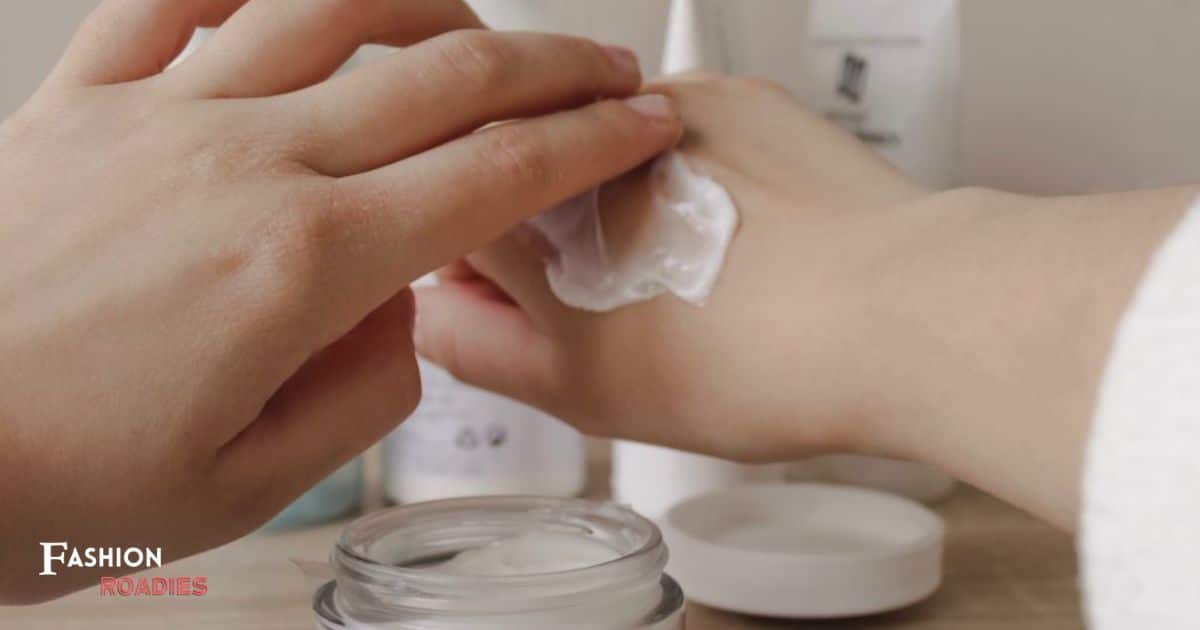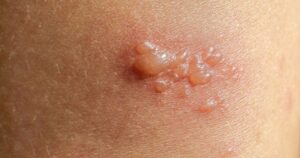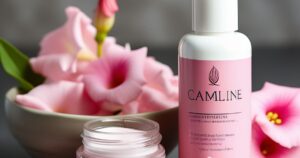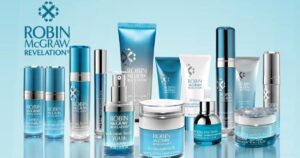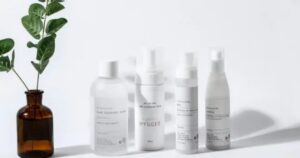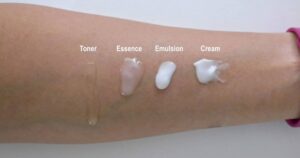Discover the art of crafting a customized skincare routine that caters to your unique needs and desires. Unveil the secrets of selecting the perfect products by navigating through the labyrinth of choices with precision and purpose. Delve into the world of skincare with knowledge and confidence, armed with the understanding that your skin type is as unique as your fingerprint. Elevate your self-care routine and embark on a journey towards radiant, healthy, and nurtured skin. Embrace the beauty of belonging to a community that values and prioritizes self-love and self-care.
Key Takeaways
- Identify your skin type to choose appropriate skincare products.
- Research ingredients and read customer reviews to avoid falling for skincare hype.
- Seek out beneficial ingredients like hyaluronic acid, vitamin C, antioxidants, retinol, and peptides.
- Avoid harmful ingredients like parabens, synthetic fragrances, sulfates, and formaldehyde.
Know Your Skin Type
The first step in choosing a skin care routine is to identify your specific skin type. Understanding your skin type is crucial in creating an effective skincare regimen that addresses your unique needs. There are five common skin types: normal, dry, oily, combination, and sensitive. Normal skin is well-balanced, neither too oily nor too dry. Dry skin tends to lack moisture and can feel tight or flaky.
Oily skin is prone to excess sebum production, leading to a shiny complexion and potential acne breakouts. Combination skin exhibits characteristics of both dry and oily skin, with an oily T-zone and drier cheeks. Sensitive skin is easily irritated and may react to certain ingredients. By determining your skin type, you can select products and treatments that cater specifically to your skin’s needs, promoting a healthier and more radiant complexion.
Avoid Falling for Hype
Many consumers often fall for exaggerated claims when it comes to choosing their skincare products. In a world of flashy advertisements and persuasive marketing tactics, it is easy to get caught up in the hype and make impulsive purchases. However, it is important to approach skincare with a critical eye and avoid falling for misleading claims. To help you navigate through the noise and make informed decisions, here are four tips to avoid falling for hype in the skincare industry:
- Research the ingredients: Look for scientific evidence and studies that support the effectiveness of the ingredients in the product.
- Read customer reviews: Real-life experiences from other customers can provide valuable insights and help you make a more informed decision.
- Consult with a dermatologist: A dermatologist can provide personalized advice based on your specific skin concerns and needs.
- Trust reputable brands: Stick to brands that have a good reputation and have been in the industry for a while.
Seek Out Beneficial Ingredients
When avoiding falling for hype in the skincare industry, it is crucial to seek out skincare products that contain beneficial ingredients. These ingredients can provide numerous benefits for your skin, such as hydration, protection, and nourishment. Look for ingredients like hyaluronic acid, which can help retain moisture and improve skin elasticity.
Vitamin C is another beneficial ingredient that can brighten the skin and reduce the appearance of dark spots. Antioxidants like green tea extract and niacinamide can protect the skin from free radicals and promote a healthy complexion. Additionally, ingredients like retinol and peptides can help stimulate collagen production and reduce the signs of aging. By choosing skincare products with these beneficial ingredients, you can ensure that your skin receives the care it deserves.
Avoid Harmful Ingredients
To ensure the effectiveness and safety of your skincare routine, it is essential to steer clear of skincare products that contain harmful ingredients. These ingredients can not only cause irritation and allergies but can also have long-term detrimental effects on your skin. Here are four harmful ingredients to avoid in your skincare products:
- Parabens: These preservatives are commonly used in skincare products but have been linked to hormonal disruptions and even cancer.
- Fragrance: Synthetic fragrances can cause skin irritation and may contain phthalates, which are harmful chemicals.
- Sulfates: These harsh cleansing agents can strip the skin of its natural oils and lead to dryness and irritation.
- Formaldehyde: This chemical is used as a preservative in some skincare products and has been classified as a human carcinogen.
Understand That Natural Doesn’t Always Mean Better
While avoiding harmful ingredients is crucial, it is important to understand that natural doesn’t always mean better when it comes to choosing your skincare routine. Many people assume that natural products are always safe and effective, but this is not always the case. Just because a product is labeled as “natural” or “organic” does not guarantee its quality or suitability for your skin.
In fact, some natural ingredients can be irritating or allergenic for certain individuals. It is essential to research and understand the properties of the ingredients in your skincare products, whether they are natural or synthetic. By doing so, you can make informed decisions and find the most suitable products for your skin. Now let’s move on to the next important factor: paying attention to the order of ingredients.
Pay Attention to the Order of Ingredients
What is the importance of paying attention to the order of ingredients in your skincare products? The order of ingredients listed on the label of your skincare products can provide valuable information about their effectiveness and potential side effects. Here are four reasons why paying attention to the order of ingredients is crucial:
- Concentration: The higher up an ingredient is listed, the higher its concentration in the product. This means that if a beneficial ingredient is listed towards the end, it may be present in such a small amount that it won’t have much impact on your skin.
- Compatibility: Understanding the order of ingredients can help you identify potential irritants or allergens. If you have sensitivities, you can avoid products that contain those ingredients listed early on.
- Formulation: The order of ingredients can give you insights into the formulation of the product. This can help you determine if the product is right for your skin type or specific concerns.
- Active Ingredients: Paying attention to the order of ingredients allows you to identify the key active ingredients in the product. This knowledge can help you select products that target your specific skincare needs.
Use Available Resources
Utilize the resources at your disposal when selecting your skin care routine. With the abundance of information available, it can be overwhelming to navigate through the vast array of products and techniques. However, by taking advantage of the resources that are readily accessible to you, you can make informed decisions that align with your skin’s specific needs.
Start by consulting with a dermatologist or esthetician who can provide personalized recommendations based on your skin type and concerns. Additionally, online platforms and communities dedicated to skincare can offer valuable insights and reviews from individuals who have similar skin concerns. Don’t be afraid to ask questions and seek guidance from experts and those who have already found success in their own skincare journeys. Remember, using available resources can empower you to create a skincare routine that makes you feel confident and connected within a community of individuals who share the same goals.
Always Do a Patch Test
To ensure compatibility with your skin, it is crucial to always perform a patch test when introducing new skincare products into your routine. This simple step can save you from potential allergic reactions and skin irritations. Here are four reasons why you should never skip the patch test:
- Prevent Skin Irritation: Patch testing allows you to identify any adverse reactions, such as redness, itching, or burning, before applying the product to your entire face.
- Determine Sensitivity: By testing a small area of your skin, you can gauge whether the product is suitable for your skin type and whether it will cause any unwanted side effects.
- Save Time and Money: Patch testing helps you avoid investing in expensive products that may not work for your skin, preventing unnecessary frustration and wasted resources.
- Maintain Skin Health: By patch testing, you prioritize your skin’s well-being, ensuring that you only use products that are safe and beneficial, promoting a healthier complexion.
FAQ’s
Can I Use the Same Skin Care Routine for All Skin Types?
While it may seem convenient to use the same skincare routine for all skin types, it is not recommended. Each skin type has specific needs and concerns that require tailored products and treatments to achieve optimal results and maintain skin health.
What Are Some Common Harmful Ingredients to Avoid in Skin Care Products?
When it comes to selecting a skin care routine, it is essential to be aware of harmful ingredients that should be avoided. These include parabens, sulfates, synthetic fragrances, and phthalates, which can potentially cause skin irritation and other adverse effects.
How Can I Determine the Order of Ingredients in a Skin Care Product?
When determining the order of ingredients in a skin care product, it is important to consider the concentration levels, as the higher the concentration, the higher up the ingredient will be on the list.
Are There Any Resources Available to Help Me Find the Best Skin Care Products for My Specific Needs?
There are numerous resources available to assist in finding the best skin care products for individual needs. These resources include online beauty forums, skincare blogs, professional dermatologist recommendations, and customer reviews on reputable websites.
How Long Should I Wait After Doing a Patch Test Before Incorporating a New Product Into My Skin Care Routine?
After doing a patch test, it is recommended to wait at least 24-48 hours before incorporating a new product into your skincare routine. This allows sufficient time to observe any potential adverse reactions.
Conclusion
In conclusion, choosing the right skincare routine requires understanding your skin type, avoiding hype, seeking out beneficial ingredients, and avoiding harmful ones. It is important to remember that natural doesn’t always mean better and to pay attention to the order of ingredients. Utilizing available resources and conducting patch tests can also aid in selecting the most suitable products. By following these guidelines, one can achieve a well-informed skincare routine for healthier and glowing skin.


